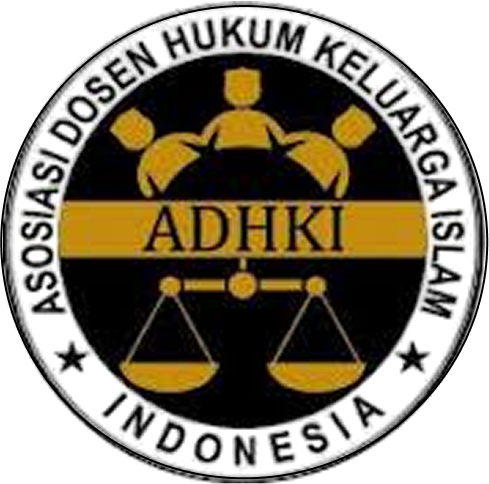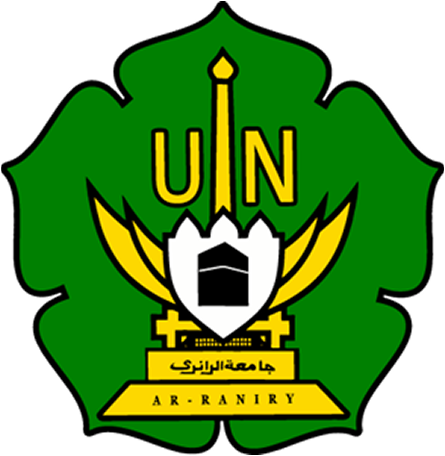The Abdau Tradition as a Living Hadith: Interplay of Islamic Law and Local Customs in Qurban Ritual at Tulehu, Maluku
DOI:
https://doi.org/10.22373/sjhk.v9i2.28679Keywords:
Abdau tradition, living hadith, Tulehu, Qurban, Islamic LawAbstract
Abdau represents a tradition of slaughtering Qurban practiced by the Muslim community of Tulehu during Eid al-Adha. This tradition commences with the meticulous preparation of three goats, which are bathed, dressed, and perfumed. They are then paraded through the village to the mosque for slaughter, accompanied by the chanting of salawat, dhikr, poems, and the pursuit of the tauhid flag along the route. This parade also showcases various cultural attractions, transforming it into a carnival that draws numerous tourists. Currently, Abdau faces significant criticism for allegedly breaching numerous fundamental principles of sharia. This research seeks to reveal the origins of this celebration and elucidate its connection to the practices derived from the Prophet's hadiths that persist within the community. This is a qualitative study, utilizing data gathered from written sources pertaining to the Abdau celebration, complemented by interviews with religious leaders, traditional authorities, and government officials in the Tulehu region who possess a deep understanding of the intricacies of the Abdau celebration. The data were subsequently examined utilizing the living hadith methodology. This study reveals that Abdau is an Islamic teaching rooted in the societal tradition, rather than a practice of a society that has undergone Islamization. The celebration of Abdau did not exist prior to the arrival of Islam; instead, it emerged concurrently with the establishment of the Tulehu region, which is home to a Muslim community. Examining the living hadith, the Abdau tradition in each of its ritual series reveals connections to the hadiths of the Prophet and its relevance to the Islamic law. Abdau is a tradition that involves the living hadith in Tulehu, particularly in the context of Qurban and its relation to the Islamic law.References
Al-Juwaini, Imam al-Haramain. Nihayat Al-Matlab Fi Dirayat Al-Mazhab. t.th.: Dar al-Minhaj, 2007.
Al-Naisabūrī, Muslim bin al-Ḥajjāj. Ṣaḥīḥ Muslim. Turki: Dār al-Thibā’ah al-Amirah, 1334.
Al-Nasāī, Abū ‘Abd al-Rahmān Aḥmad bin Shu‘aib. Sunan Al-Nasāī. Kairo: al-Maktabah al-Tijarah, 1930.
Al-Qazwīnī, Abū ‘Abdillāh Muḥammad bin Yazīd. Sunan Ibn Mājah. Saudiyyah: Dar al-Siddiq, 2014.
Al-Suyuti, Jalaluddin. Al-Ashbah Wa Al-Nazair. t.th.: Dar al-Kutub al-Ilmiyyah, 1983.
Al-Tamimi, Abu Abdirahman. Taudih Al-Ahkam Min Bulug Al-Maram. Mekah: Maktabah al-Asadi, 2003.
Al-Tirmizī, Muḥammad bin Isā Abū Isā. Sunan Al-Tirmizī. Mesir: Mustafa al-Bab al-Halabi, 1975.
Darmalaksana, Wahyuddin, et.al., “Analisis Perkembangan Penelitian Living Al-Qur’an Dan Hadis.” Perspektif 3, no. 2 (2019).
Djawas, Mursyid, et.al., “The Integration Between Syara’ and Ade’ in Marriage Tradition Bugis Bone, South Sulawesi,” al-Ihkam 18, No. 2 (2023). https://doi.org/10.19105/al-lhkam.v18i2.10373.
Hanbal, Ahmad bin Muhammad bin, Musnad Al-Imam Ahmad Bin Hanbal. t.tp.: Mu’assasah al-Risalah, 2001.
Handoko, Wuri, et.al., ”Islamic Contextualization on The Periphery of The Indonesian Sultanates: An Exploration of Ancient Islamic Manuscript in Maluku Island,” Journal of Indonesian Islam (2024). DOI: 10.15642/JIIS.2024.18.2.319-348.
Lausiry, Sumarni and La Ode Ali Basri, “Tradisi Abdau Di Desa Tulehu Kecamatan Salahutu Kabupaten Maluku Tengah Abad XX,” Idea of History 2, no. 1 (2019).
Moh Najib, Agus, “Reestablishing Indonesian Madhhab: ‘Urf and the Contribution of Intellectualism,” al-Jami’ah: Journal of Islamic Studies 58, No. 1 (2020). DOI: https://doi.org/10.14421/ajis.2020.581.171-208.
Mony, Abdul Kadir. “Pelaksanaan Abda’u Terhadap Nilai Agama Di Desa Tulehu.” Fikratuna 8, no. 1 (2016).
Nurdin, Abidin, et.al., ”Mappatammaq Mangaji in Mandar, West Sulawesi: Childrearing Patterns Based on the Qur'an in the Anthropological Perspective of Islamic Law,” El-Usrah: Jurnal Hukum Keluarga 7, No. 2 (2024). DOI: http://dx.doi.org/10.22373/ujhk.v7i2.25338.
Purba, Nelvitia, et.al., “Revitalization of Socio-Cultural Based Dolanan in the Formation of Children's Character in Javanese Families in Binjai, Indonesia,” El-Usrah: Jurnal Hukum Keluarga 7, No. 1 (2024). DOI: http://dx.doi.org/10.22373/ujhk.v7i1.23054.
Puyu, Darsul S. et.al., “Mansai in the Marriage Tradition of the Banggai Ethnic in Central Sulawesi, Indonesia: A Living Sunnah Perspective,” Samarah: Jurnal Hukum Keluarga dan Hukum Islam 7, No. 3 (2023). DOI: http://dx.doi.org/10.22373/sjhk.v7i3.16510.
Qudsi, Saifuddin Zuhri. “Living Hadis: Geneologi, Teori Dan Aplikasi.” Living Hadis 1, no. 1 (2016).
Rahawarin, Yunus. “Konstruksi Makna Teologis Festival Abda’u.” Sosiologi: Jurnal Ilmiah Kajian Ilmu Sosial Dan Budaya 21, no. 1 (2019). https://doi.org/10.23960/sosiologi.v21i1.36.
Rahmawati Rahmawati, et.al., “Harmonizing Islamic Law and Local Culture: A Study of The Mampatangpulo Tradition in Duri, Enrekang Regency,” Jurnal Ilmiah al-Syir’ah 22, No. 1 (2024). DOI: http://dx.doi.org/10.30984/jis.v22i1.2678.
Reid, Anthony, ”Religious Pluralism or Conformity in Southeast Asia’s Cultural Legacy,” Studia Islamika 22, No. 3 (2015). DOI: 10.15408/sdi.v22i3.2352.
Sulaeman, Ratna Mahriani, and Ali Nurdin. “Komunikasi Tradisi Abda'u Pada Prosesi Hewan Qurban Adat Tulehu Maluku.” Komunika: Jurnal Dakwah Dan Komunikasi 13, no. 2 (2019).
Sunarimahingsih, Yulita Titik, Tyas Susanti, and Bernadeta Resti Nurhayati. “Signifikansi Rumah Adat Baileo Sebagai Simbol Eksistensi Negeri Di Ambon.” Tesa Arsitektur 18, no. 2 (2021): 90. https://doi.org/10.24167/tesa.v18i2.2920.
Suryadilaga Alfatih, Muhammad. “Living Hadis Dalam Tradisi Sekar Makam.” Jurnal Al-Risalah 13 (2013).
Suwandi Suwandi and Teguh Setyobudi, “Sintesa Hukum Islam dan Kebudayaan Jawa Suatu Pendekatan Profetik /The Synthesis of Islamic Law and Javanese Culture a Prophetic Approach,” De Jure 12, No. 2 (2020). DOI: https://doi.org/10.18860/j-fsh.v12i2.10090.
Internet Data
Ayal, James F. “Ribuan Warga Mengikuti Kaul Negeri Dan Abdau.” Antara Maluku, 2012. https://ambon.antaranews.com/berita/18941/ribuan-warga-saksikan-kaul-negeri-dan-abdau.
Azaim, Ahmad. “Aqidatul Awam; Kitab Syair Yang Digubah Langsung Rasulullah Dalam Mimpi Syekh Al-Marzuqi.” BincangSyariah, 2020. https://bincangsyariah.com/khazanah/kitab-aqidatul-awam-kitab-syair-yang-digubah-langsung-rasulullah-dalam-mimpi-syekh-al-marzuqi/.
Alfajri, Ahmad. “Mengenal Kitab Nazham Aqidatul Awam.” ahmadalfajiri.com. Accessed May 14, 2024. https://ahmadalfajri.com/mengenal-kitab-nazham-aqidatul-awam/.
Maluku, Lentera. “Melestarikan Budaya Maluku Lewat Karnaval Abda’u 2019.” Kumparan.Com, 2019. https://kumparan.com/lenteramaluku/melestarikan-budaya-maluku-lewat-karnaval-abdau-2019-1reNZsGWjq1/full.
Interviews:
Interview with Gane Lestaluhu, Religious Leader, Tulehu, February 25, 2023.
Interview with Rahman Lestaluhu, Traditional Leader, Tulehu, February 12, 2023.
Interview with Rahman Nahumarury, Traditional Leader, Tulehu, February 12, 2023.
Interview with Sudarmaji Lestaluhu, Village Secretary, Tulehu, February 28, 2023.
Interview with Usman Umarella, Head of Saniri Negeri, Tulehu, February 14, 2023.
Downloads
Published
Issue
Section
License
Copyright (c) 2025 Rajab Rajab, Wa Ulfa Ode, Gamal Achyar, Fakhrurrazi M.Yunus

This work is licensed under a Creative Commons Attribution-ShareAlike 4.0 International License.
Authors who publish in Samarah: Jurnal Hukum Keluarga dan Hukum Islam agree to the following terms:
- Authors retain copyright and grant the journal right of first publication with the work simultaneously licensed Attribution-ShareAlike 4.0 International (CC BY-SA 4.0) that allows others to share the work with an acknowledgment of the work's authorship and initial publication in this journal.
- Authors are able to enter into separate, additional contractual arrangements for the non-exclusive distribution of the journal's published version of the work (e.g., post it to an institutional repository or publish it in a book), with an acknowledgment of its initial publication in this journal.
- Authors are permitted and encouraged to post their work online (e.g., in institutional repositories or on their website) prior to and during the submission process, as it can lead to productive exchanges, as well as earlier and greater citation of published work. (See The Effect of Open Acces)









